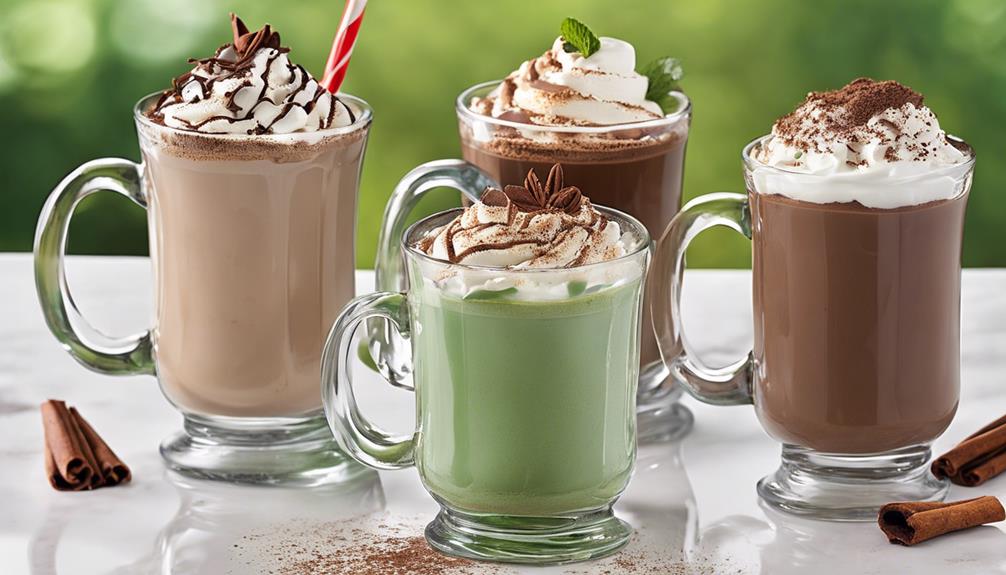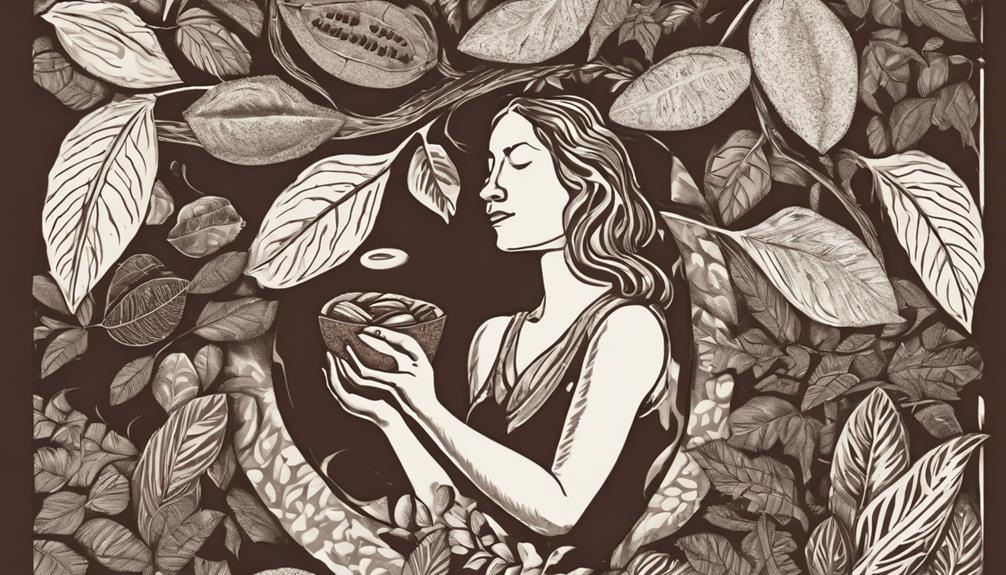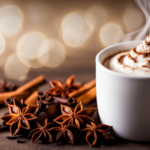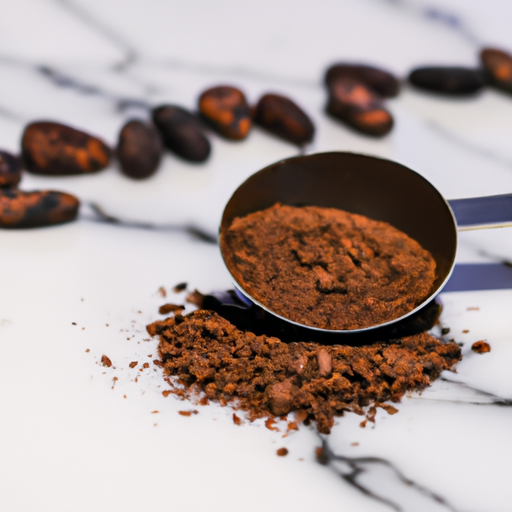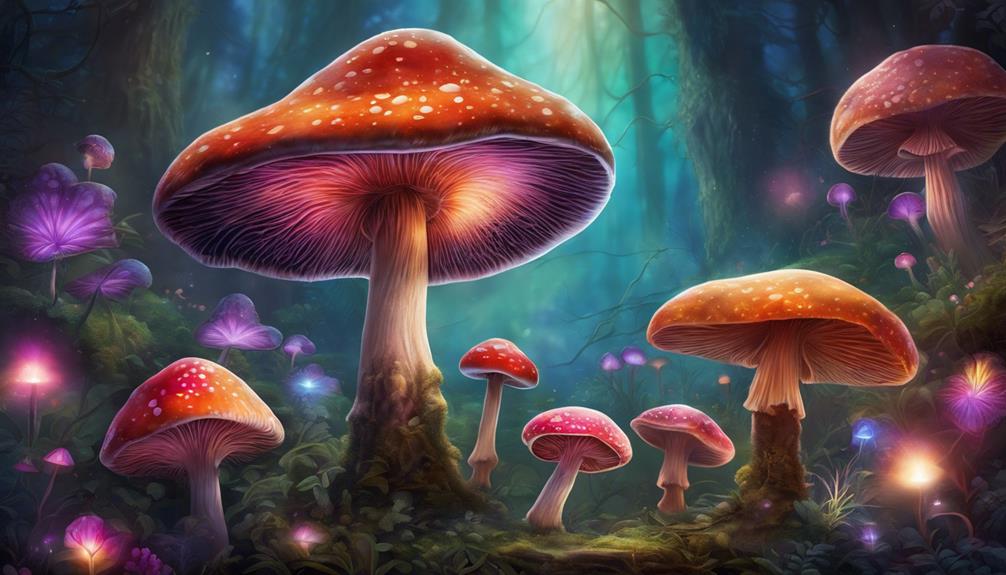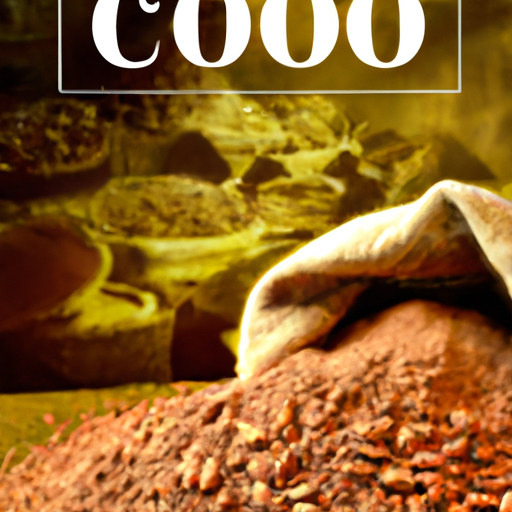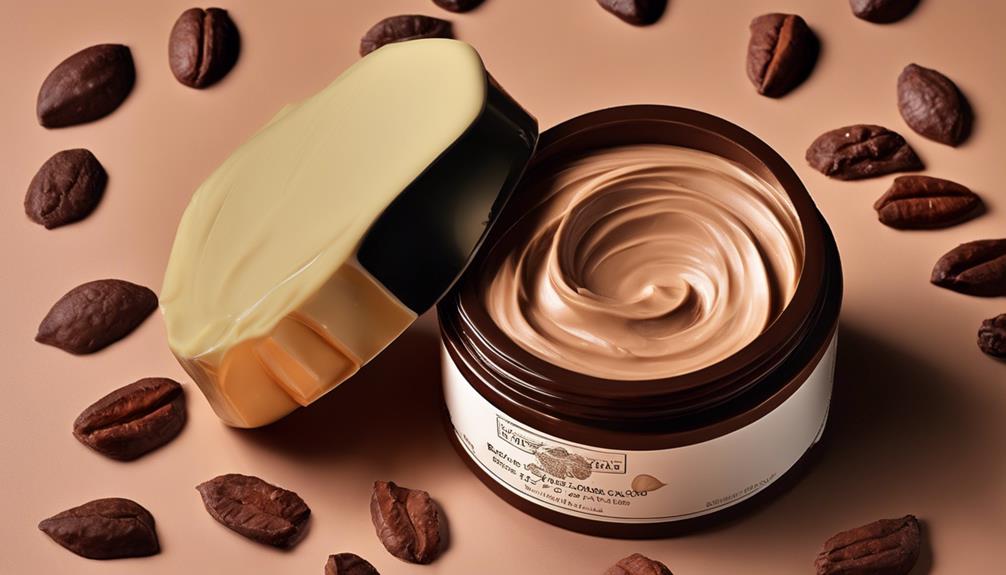I recommend trying out these 5 delicious cacao drink recipes today. Begin with the Creamy Cacao Hot Chocolate, which involves blending water, almond milk, and ceremonial cacao for a luxurious and creamy treat. Then, enjoy the Decadent Cacao Mint Latte, a delightful combination of chocolate and mint flavors. For a comforting option, treat yourself to the Spiced Cacao Chai Tea, which mixes cacao with traditional chai spices. If you prefer a cold beverage, the Iced Cacao Espresso Shake provides a refreshing blend of chocolate and coffee. Finally, savor the Silky Cacao Coconut Milkshake for a tropical twist with coconut and cacao. Each recipe offers unique flavors and benefits to enhance your day.
Key Takeaways
- Creamy Cacao Hot Chocolate: Rich cacao flavor with creamy texture and antioxidants for well-being.
- Decadent Cacao Mint Latte: Luxurious blend of chocolate and mint, not overly sweet, for energy.
- Spiced Cacao Chai Tea: Warm, comforting beverage combining cacao richness with traditional chai spices.
- Iced Cacao Espresso Shake: Unique blend of chocolatey notes and bold coffee flavor for energy and focus.
- Silky Cacao Coconut Milkshake: Smooth, creamy mix of cacao and coconut milk, tropical flavors with antioxidants.
Creamy Cacao Hot Chocolate
Blending water, almond milk, and ceremonial cacao creates a luxurious and comforting Creamy Cacao Hot Chocolate. This delightful beverage offers a perfect balance of rich cacao flavor and creamy texture, making it a decadent treat for any time of day. The ceremonial cacao used in this recipe adds depth and a hint of bitterness that contrasts beautifully with the sweetness of almond milk.
To make this indulgent hot chocolate, start by heating a mixture of water and almond milk in a saucepan. Once it simmers, add the ceremonial cacao and whisk until smooth and frothy. Pour the hot chocolate into your favorite mug and savor the aroma as you take your first sip. The antioxidants and nutrients present in ceremonial cacao make this drink not only delicious but also beneficial for your well-being.
Next time you crave a comforting treat, whip up a batch of Creamy Cacao Hot Chocolate to indulge in a moment of pure bliss.
Decadent Cacao Mint Latte
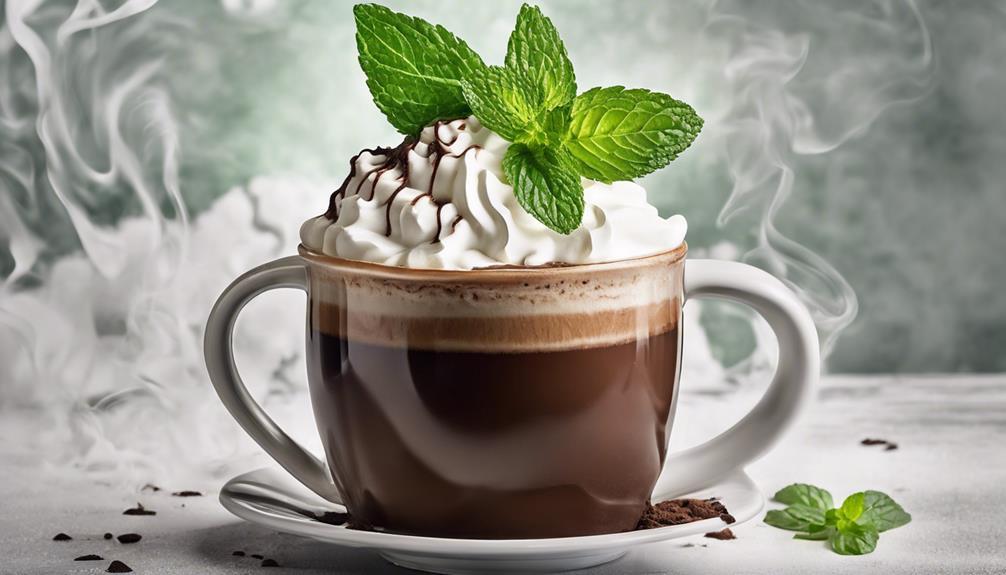
After enjoying the delightful Creamy Cacao Hot Chocolate, the next decadent cacao drink to try is the invigorating Decadent Cacao Mint Latte. This ceremonial cacao recipe combines the richness of cacao with a revitalizing hint of mint, providing energy without overwhelming sweetness. Here's why you'll love it:
- Balanced Flavors: The Decadent Cacao Mint Latte strikes a perfect balance between indulgent chocolate flavor and rejuvenating minty freshness. Each sip offers a harmonious blend of these two distinct tastes, creating a truly satisfying experience for your taste buds.
- Luxurious Taste: Indulge in the luxurious taste of chocolate and mint combined in a warm, comforting drink. The ceremonial cacao used in this recipe elevates the experience, making it a treat for both chocolate and mint enthusiasts.
- Unique Sophistication: The combination of cacao and mint in this latte results in a sophisticated and distinctive flavor profile that sets it apart from traditional hot beverages. Experience the richness of cacao and the invigorating essence of mint in every sip.
Spiced Cacao Chai Tea
Combining the rich flavors of cacao with traditional chai spices like cinnamon, cardamom, and cloves, Spiced Cacao Chai Tea offers a warm and comforting beverage perfect for chilly days or as a relaxing evening drink.
This ceremonial blend of cacao and chai spices not only delights the taste buds but also provides a cozy and aromatic experience that soothes the soul.
By adjusting the spice levels to your liking, you can tailor this drink to suit your individual preferences.
The antioxidants, minerals, and nutrients present in cacao add a nutritional boost to this indulgent treat, making it a delightful choice for those seeking both flavor and health benefits.
Iced Cacao Espresso Shake

I adore relishing the stimulating kick of the Iced Cacao Espresso Shake, a perfect fusion of creamy almond milk, ceremonial cacao, espresso, and ice.
- Rich Flavors: The ceremonial cacao blended with espresso creates a delightful pick-me-up, offering a unique combination of deep, chocolatey notes with a hint of bold coffee flavor.
- Revitalizing Energizer: This creamy drink, chilled with ice, isn't only invigorating but also provides a balanced boost of energy and focus due to the antioxidants from cacao and the caffeine from espresso.
- Ideal for Any Day: Whether it's a scorching hot afternoon or a busy morning, the Iced Cacao Espresso Shake is a delectable alternative to traditional iced coffee, giving you a cool and invigorating drink to enjoy the benefits of ceremonial cacao in a new way.
Try this recipe to indulge in a rejuvenating and energizing drink that combines the richness of ceremonial cacao with the boldness of espresso – a delightful treat for any time of day.
Silky Cacao Coconut Milkshake
Experience the tropical delight of the Silky Cacao Coconut Milkshake, a luxurious blend of ceremonial cacao and creamy coconut milk. This decadent beverage combines the antioxidant-rich properties of ceremonial cacao with the nourishing fats and nutrients found in coconut milk.
The smooth and creamy texture of this cacao drink is achieved by blending these two ingredients together until perfectly combined. Imagine yourself savoring the tropical flavors of coconut intertwined with the rich, chocolatey notes of ceremonial cacao in each sip of this satisfying drink.
This Silky Cacao Coconut Milkshake offers a delectable and invigorating way to enjoy the benefits of ceremonial cacao while treating yourself to a sumptuous and indulgent beverage. So, if you're seeking to add a touch of luxury to your day, whip up this silky concoction and transport yourself to a paradise of flavor and goodness.
Frequently Asked Questions
How Many Times a Day Should I Drink Cacao?
I should drink cacao once a day to enjoy its benefits without overdoing it. Moderation is key to maintaining a healthy balance in my diet. Drinking it too frequently can lead to excessive caffeine intake, so one serving daily is ideal.
How Long Does It Take to Feel the Effects of Cacao?
I start feeling the effects of cacao within 30 minutes to 2 hours after enjoying it. The time varies based on my metabolism and sensitivity to cacao. Its active compounds, like theobromine, bring me a mood lift, focus, or relaxation.
What Are the Benefits of Drinking Cacao Daily?
Drinking cacao daily is like giving my body a superhero cape! It boosts antioxidants, supports muscle function, enhances mood, increases energy, and promotes heart health. It's my daily dose of wellness in a delicious cup.
Is It Good to Drink Cacao First Thing in the Morning?
Drinking cacao first thing in the morning is great! It provides a natural energy boost without the caffeine crash. The theobromine in cacao enhances focus, and the antioxidants protect from oxidative stress. It supports a positive mood and mental clarity.
Can I Use Raw Cacao in the Cacao Drink Recipes?
Yes, you can definitely use raw cacao in cacao drink recipes. Its rich flavor and health benefits make it a great addition to any drink. You can even try adding some to your chocolate mousse recipe with raw cacao for an extra dose of decadence.
Conclusion
So there you have it, five delicious cacao drink recipes to try today. Whether you're in the mood for something creamy, decadent, spiced, or invigorating, there's a cacao drink for every occasion.
Experiment with these recipes and impress your friends and family with your newfound cacao drink-making skills. Who knew that cacao could be so versatile and tasty?
Give these recipes a try and elevate your drink game to a whole new level.

